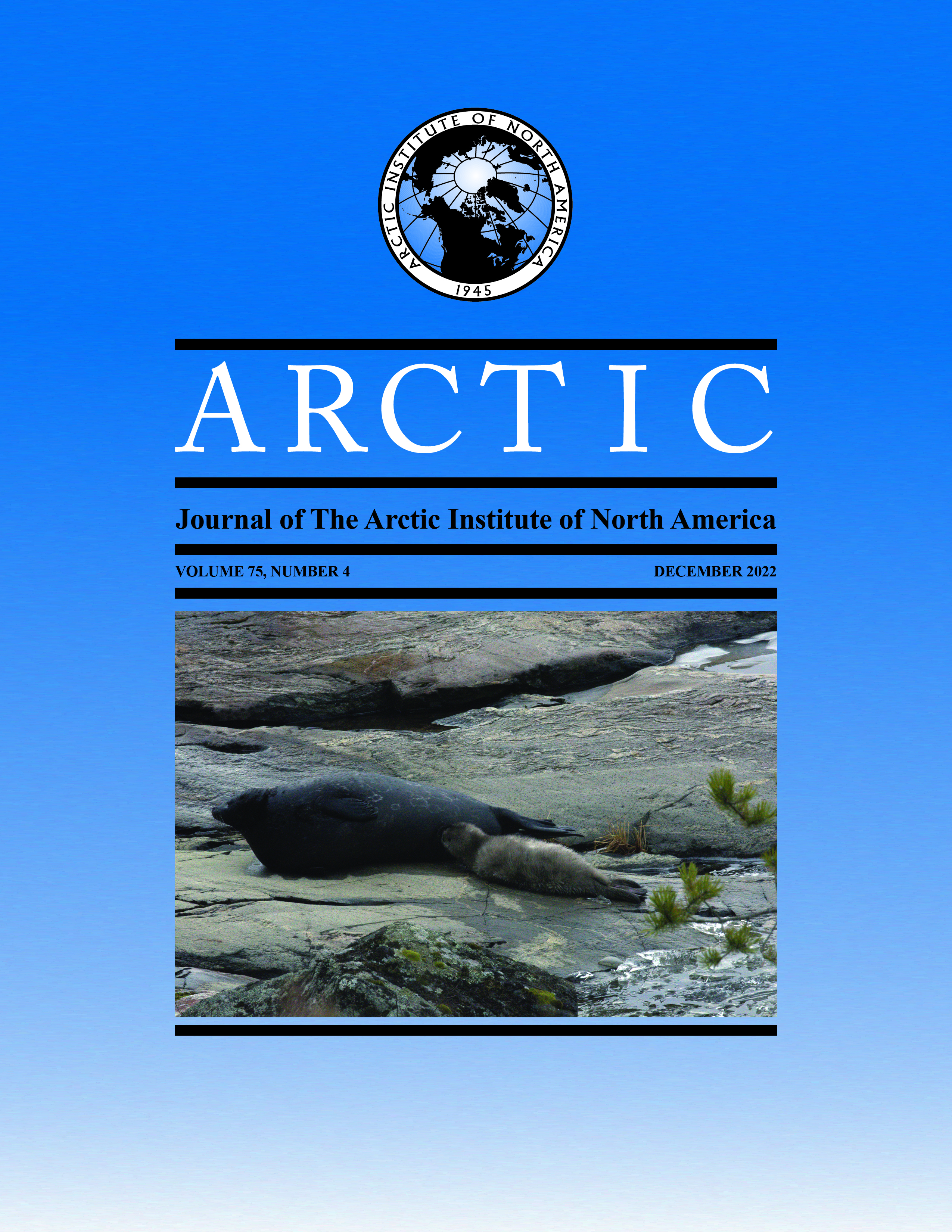Ladoga Ringed Seal (Pusa hispida ladogensis) Can Breed on Land: A Case Study of the Nursing Period
DOI :
https://doi.org/10.14430/arctic76337Mots-clés :
abri de reproduction; piège photographique; changement climatique; lac Ladoga; comportement mère-nouveau-né; reproduction de pinnipèdes; Pusa hispida ladogensis; phoque annelé; mueRésumé
Le phoque annelé donne naissance à ses petits et les nourrit dans un abri subnival de la glace rapide. Son habitat de reproduction se transforme sous l’effet du changement climatique. Ici, nous présentons le résultat de l’observation d’un phoque annelé de Ladoga (Pusa hispida ladogensis) en eau douce et de son nouveau-né durant la saison de reproduction de 2020, lorsque moins de 1 % du lac Ladoga était couvert de glace. Nous avons repéré un nouveau-né dans la zone côtière d’une île et avons suivi son évolution sur la terre ferme à l’aide de la méthode du piège photographique à la lumière du jour. En tout, nous avons pris 2 978 photos, et les phoques étaient présents dans 637 d’entre elles. La femelle a nourri son nouveau-né au lieu de naissance pendant 34 à 37 jours, ce qui s’apparente à la période de lactation dans les abris des sous-espèces de l’Arctique (de 36 à 41 jours, pour une moyenne de 39 jours). Pendant la journée, la femelle restait avec son petit ou passait de longues périodes dans l’eau. Le pourcentage de temps consacré à l’allaitement variait de 2,4 % à 4,7 % (moyenne de 3,3 %, écart-type = 1,1) à des jours différents. Un enregistrement vidéo nous a permis de constater que le comportement du nouveau-né était caractérisé par un grand degré de vigilance comparativement à d’autres phocidés se reproduisant dans des lieux exposés. Cette étude de cas indique que le phoque annelé du lac Ladoga est capable de nourrir ses petits sur la terre ferme en commençant peu après leur naissance jusqu’à la période de présevrage. Cependant, le succès de reproduction lors de printemps doux peut être contraint par la pression de prédation.



